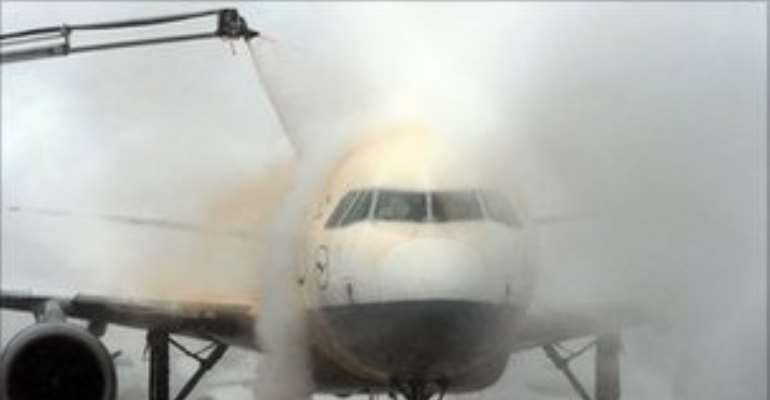HEATHROW’S DEFENCE AGAINST WINTER

Richard Scott looks at the equipment that keeps Heathrow moving in icy and snowy weather conditions
Heathrow is the UK's busiest airport by far. It deals with almost 1,300 flights per day. But it is still vulnerable to bad weather.
Last year the airport had at least one of its two runways working all the time, but the year before it was forced to shut.
With 180,000 passengers using the airport each day, even a small disruption causes problems for a lot of people.
Heathrow's operator, BAA, says it has invested £500,000 this year to help keep the airport moving and is planning to invest another £3m over the next four years.
The company gave BBC News exclusive access to see their “snow team”' in action.
They have a variety of vehicles they use to keep the runways clear. The first line of defence is from the anti-icing vehicles. They spray the liquid onto runways and taxiways. If the fluid is not washed away by rain or snow it can keep the surfaces free of ice for up to 24 hours.
Some airports have already had to deal with difficult winter conditions this week
About half of that liquid can be recovered with specialist vehicles which suck it up again. But at the moment it cannot be re-used because of the contamination with water.
If the snow starts to settle, the team can switch to using a different vehicle. This has a giant roller behind the cab which brushes snow off to one side.
Seven vehicles often travel in a 'V' formation – similar to migrating birds – with the lead vehicle at the point, then pairs of vehicles behind it and just outside. In that way the snow is swept right to the edge of the runway. And if the snow gets too heavy for the brushes to deal with, then the vehicles have snow ploughs at the front which they can use instead.
“At any one time at Heathrow we've got up to 200 aircraft coming toward Heathrow so we have to make sure we keep a platform for them to land on,” says David Whittington, head of Heathrow's airside operations.
“We make sure our runways are cleared initially, and then we work out from the runways, the taxiways, the stands, making sure all the surfaces are kept clear.”
Although the aircraft clearly do not run if the conditions are unsafe, they can play their part too. Each runway has a plane landing or taking off every couple of minutes and the heat from the engines helps to keep the surfaces clear.
In normal conditions the runways are checked several times a day for “foreign object debris”. The inspection teams get three minutes whilst landings and take-offs are put on hold to make their checks.
When there is snow those checks can be as frequent as every 15 minutes – and the teams have specialist equipment on board to check how much grip is available.
Weather and ground temperature sensors near the runways, together with Met Office data, help the airport to predict what is likely to happen over the coming hours. But sometimes even the best preparation will not help.
